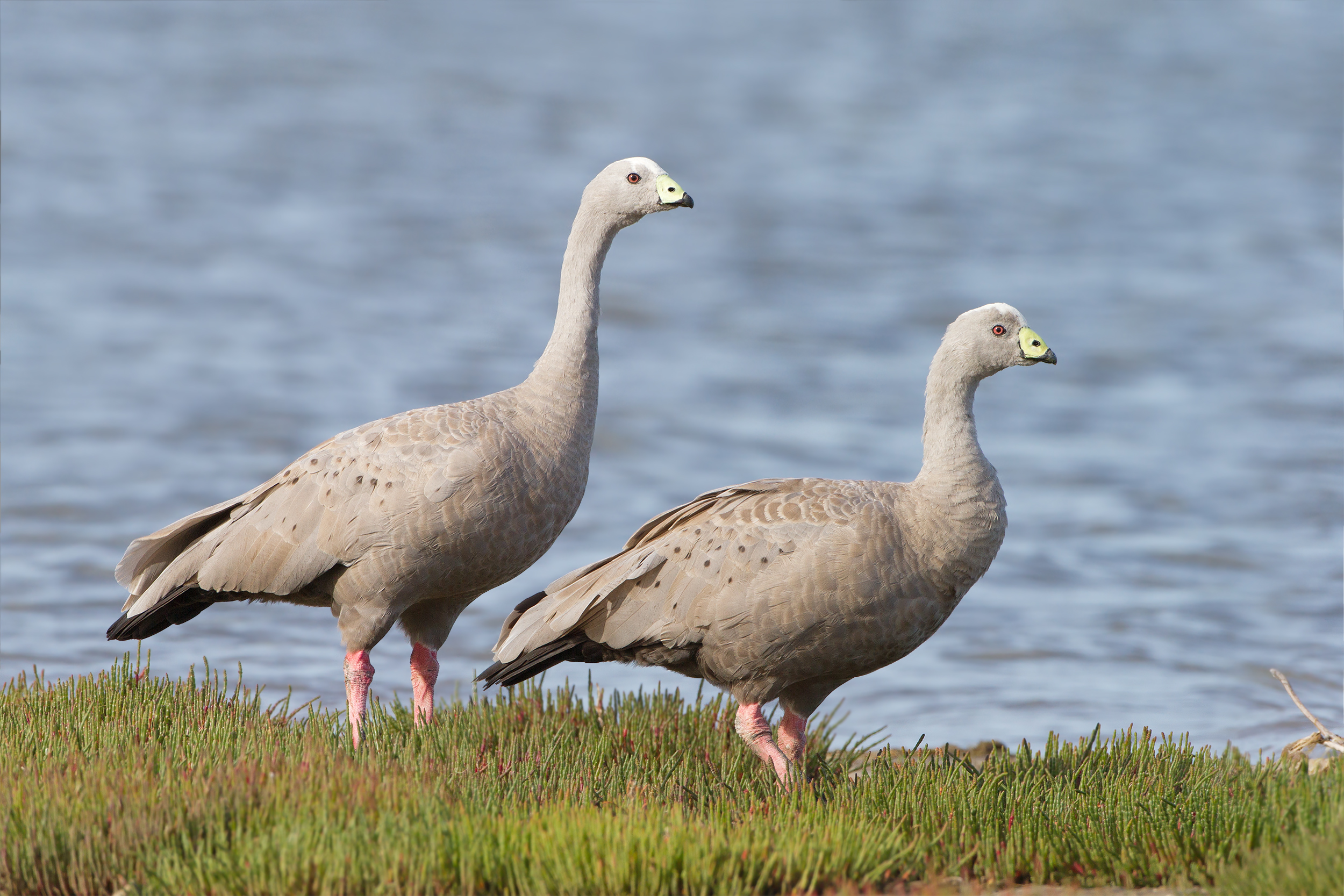SPECIES: Cereopsis novaehollandiae grisea — Cape Barren Goose (south-western)
CLASSIFICATION: Vulnerable
Is it a bird? Is it a plane? It could very well be a Cape Barren Goose. The south-western subspecies of the Cape Barren Goose is large and distinctive. It's also easy to spot in its habitat, not to mention is highly visible and vocal when flying. Being discreet is not it's strong point. They inhabit grasslands and low fields and to lesser extent, open areas with taller/denser vegetation. Large saucer-like nests are built on the ground and chicks are capable of feeding themselves within a day of hatching.
The south-western subspecies of Cape Barren Goose is found at around 70 island and rock locations off the coast of southern WA. As a guesstimate, the existing population is around 650 birds and in it's favour, individuals have a long life expectancy of up to 15 years. The main threat to remaining birds is extreme weather, particularly heat, given their preference for open habitat. Eggs and young are also prone to predation by other birds and feral cats. Since hunting Cape Barren Geese for food was outlawed in the 1930's, this is no longer a cause of the population's demise. For now, the remaining population of the south-western subspecies of the Cape Barren Goose seems to be stable, but into the future, it's risky to say the least.
Photo: JJ Harrison (https://www.jjharrison.com.au/) - Own work, CC BY-SA 3.0, https://commons.wikimedia.org/w/index.php?curid=17...

